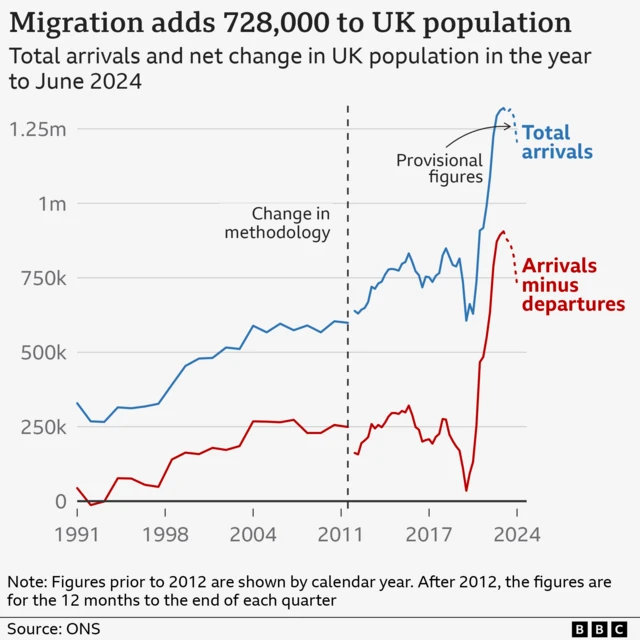Ukraine war, study visas, and Covid all drive higher immigration - ONSpublished at 10:36 GMT 28 November 2024
ONS director Mary Gregory says long-term international migration to the UK has been at "unprecedented levels" since 2021.
"This has been driven by a variety of factors, including the war in Ukraine and the effects of the post-Brexit immigration system," she says.
"Pent-up demand for study-related immigration because of travel restrictions during the coronavirus pandemic also had an impact."
She adds that while remaining high historically, net migration is "beginning to fall" - as the figures today demonstrate.
Across the 12 month period to June 2024 "we have seen a fall in immigration, driven by declining numbers of dependants on study visas coming from outside the EU," Gregory says.
"Over the first six months of 2024, we are also seeing decreases in the number of people arriving for work-related reasons. This is partly related to policy changes earlier this year and is consistent with visa data published by Home Office."









